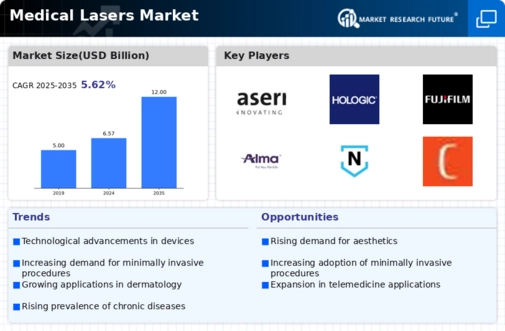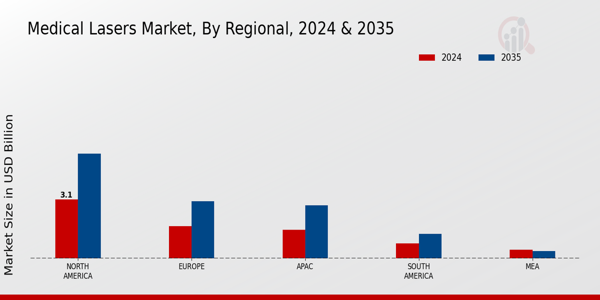Market Share
Medical Lasers Market Share Analysis
According to the United Nations Population Fund (UNPF), the percentage of elderly individuals (aged 60 or above) in the global population is expected to rise. Currently, they make up about 12.3% of the world's population, and this is projected to increase to around 22% by the year 2050, despite overall population growth. This demographic shift is expected to significantly drive the dental market. The increase in the aging population will lead to a higher demand for dental treatments and procedures. Older individuals may require dental fillings, dentures, dental implants, and other interventions to address their oral health issues. This will create opportunities for the dental consumables market to provide the necessary materials and products for these treatments. As people age, their dental health becomes more crucial for their overall well-being. Poor oral health can affect their ability to eat, speak, and socialize comfortably. It can also lead to pain, infection, and other complications. Therefore, the importance of maintaining good oral hygiene and seeking regular dental care becomes even more significant for older individuals. The dental consumables market plays a vital role in meeting the demands of dental treatments for the aging population. Dental consumables include materials such as dental implants, fillings, crowns, and adhesives, which are necessary for various dental procedures. These products ensure the quality and durability of dental treatments, improving the oral health and quality of life for older individuals. In conclusion, the increase in the aging population worldwide will have a significant impact on the dental market. Older individuals often face various dental issues that require treatments and procedures. The dental consumables market will play a crucial role in providing the necessary materials for these interventions. It is important for older individuals to prioritize their oral health and seek regular dental care to maintain their overall well-being. Dental professionals will need to adapt to the specific needs of elderly patients, and advancements in dental technology will continue to improve the quality and efficiency of dental treatments. By addressing the dental needs of the aging population, we can ensure better oral health and a higher quality of life for older individuals.













Leave a Comment